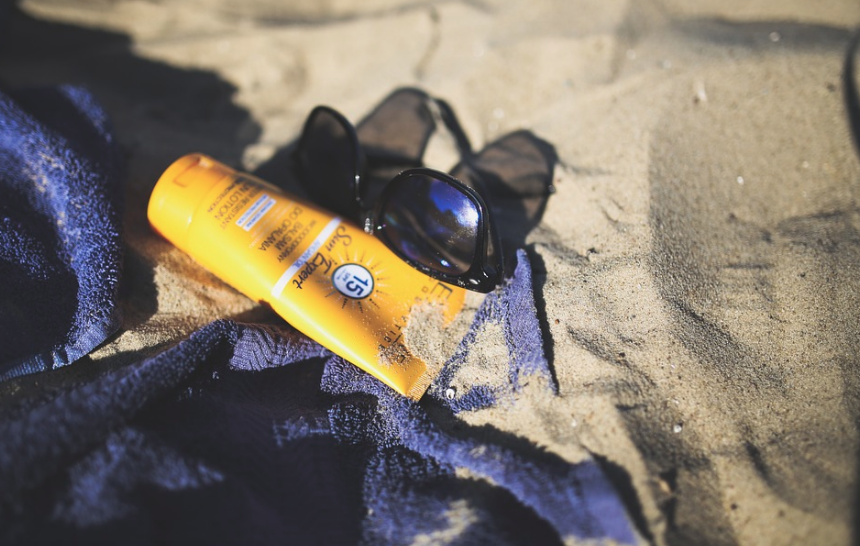As we begin to spend more time outdoors in the summer weather, we wear less layers, exposing our skin to the sun’s damaging rays. Wearing sunscreen everyday has been proven to decrease the chances of premature aging, sun spots and, most importantly, skin cancer. With sun protection coming in a multitude of formulas, it can be extremely difficult to determine which to choose. There are two main kinds of sunblock — mineral and physical.
Mineral-based sunscreens, also referred to as physical sunscreens, contain ingredients that physically block the sun’s UV rays. Titanium dioxide and zinc oxide are the most commonly used active mineral ingredients in mineral sunscreens, which naturally defect UVA and UVB rays by sitting on top of the skin to create a film. Mineral sunscreens are reminiscent of those that our moms used to slather on us at the beach — the thick white paste that leaves a slight white cast over the skin. Because of their active minerals, mineral sunscreens do not fully sink into the skin, therefore leaving a white tint or even a flash black in photos. While they do not absorb into the skin, mineral sunscreens begin working immediately, whereas chemical sunscreens take around 20 minutes to absorb and be fully protective.
Chemical sunscreens contain chemical filters, such as oxybenzone, avobenzone, or octinoxate, that absorb the sun’s UVA and UVB rays, rather than deflecting them. Chemical sunscreens are the most common on the market, used in brands such as Coppertone, Banana Boat and Neutrogena. While the ingredients in chemical filter sunscreens are FDA-approved, the absorption of UV rays through these chemicals can be responsible for hormonal imbalances. Sunscreen companies have began releasing more natural sunscreens, but there’s still cause to question what exactly should be avoided to be adequately protected from the sun.
It comes down to preference. Depending on whether the feeling of mineral sunscreens bothers you or if you are more concerned of the toxicity of the ingredients. There are so many natural based sunscreens that claim to be safe, but the easiest way is to determine this is by measuring the toxicity of each product. The Environmental Workers Group rates both ingredients and products on a hazard scale to indicate their toxicity, 1 being harmless and 10 meaning very dangerous if absorbed into the bloodstream. To compare mineral and chemical sunscreens in toxicities, zinc oxide, most commonly found in mineral formulas, is rated a 2, whereas oxybenzone, found in most chemical sunscreens, is rated an 8.
There is still much more research the FDA must do to understand the harmful effects of some sunscreens. Although some of these studies are unpublished, we do know that increased exposure to the sun is accompanied by dangerous side effects that can be avoided by covering up with SPF.





